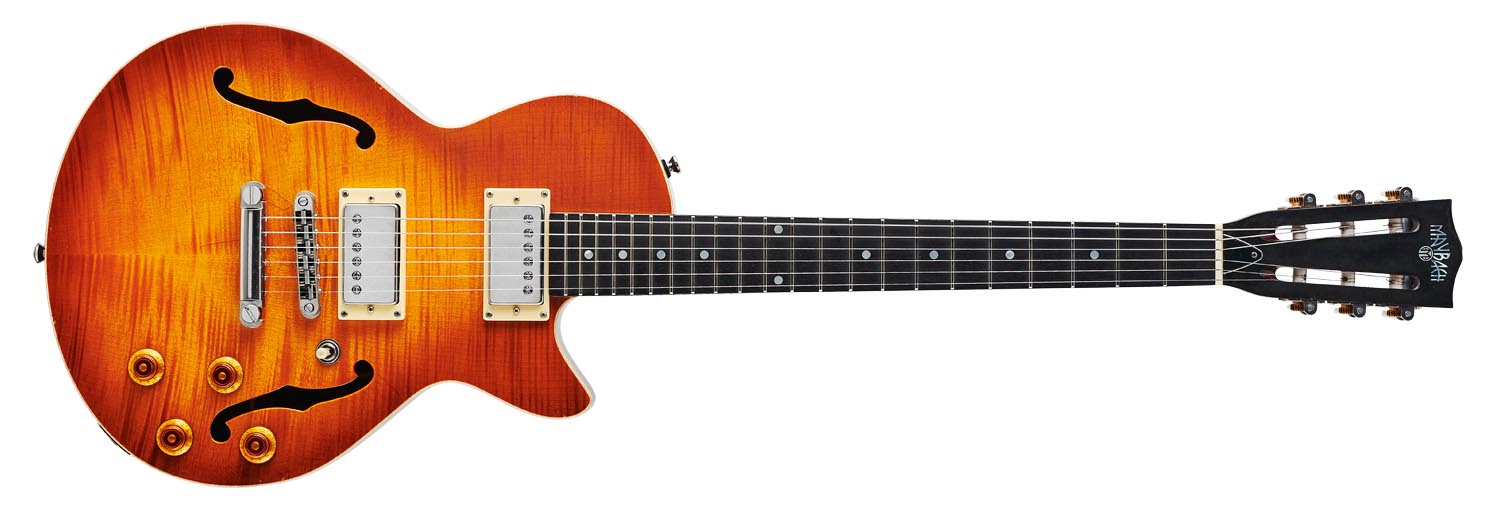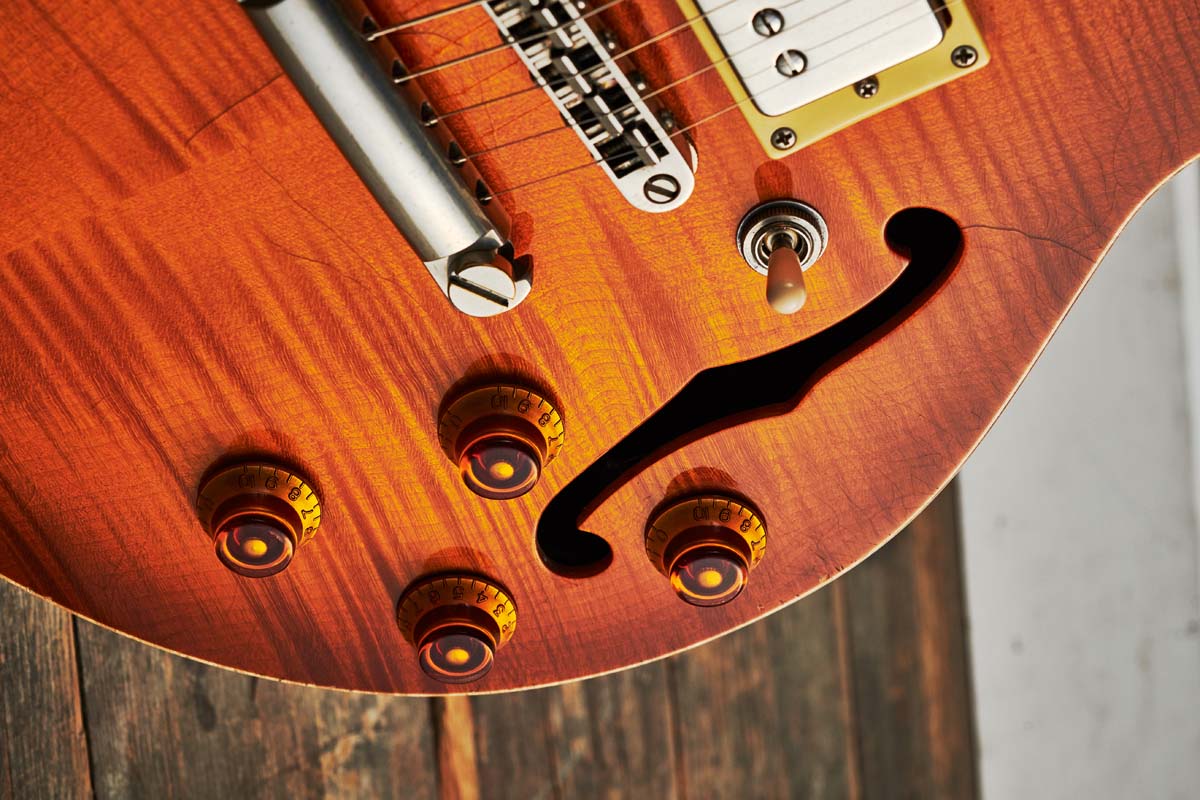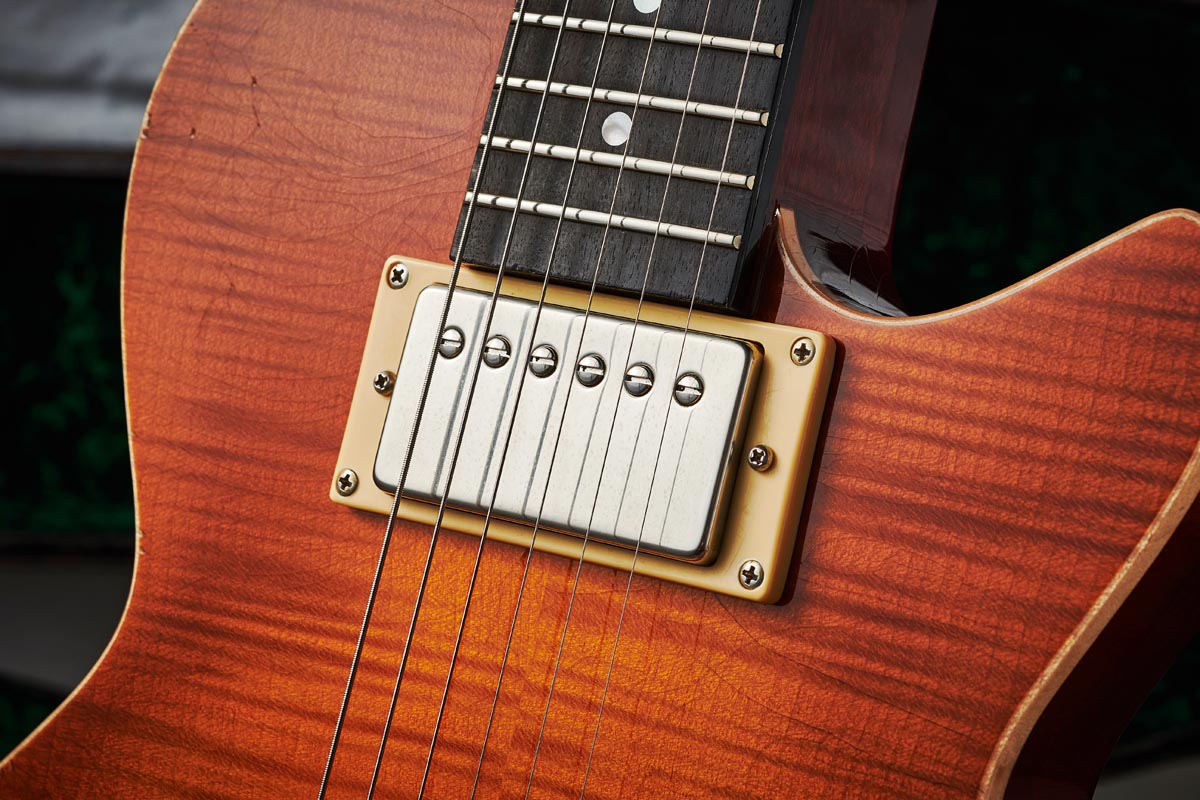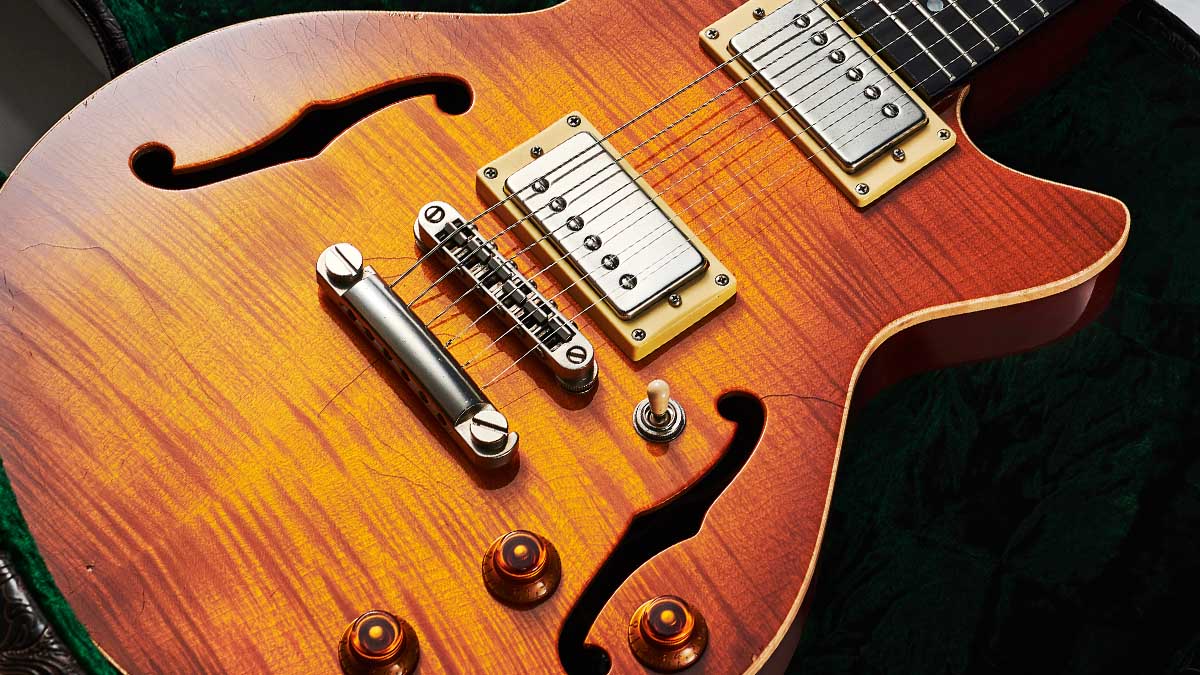Guitar World Verdict
With its impeccable compact build and convincing PAF tones, the Little Wing is a breath of fresh air for the aged pseudo-vintage guitar.
Pros
- +
Beautiful old-school build.
- +
Realistic ageing and cracked lacquer.
- +
Super sounds and pickup choice.
Cons
- -
The tuners are an odd choice.
- -
Overshadowed by copies in the range.
You can trust Guitar World
This writer’s head hit his laptop keyboard with a resonant thump after a request to review another copy electric guitar. As if our market doesn’t have enough of those already, here are some more.
Maybach’s range covers the bolt-on and set-neck classics in some style, which are pretty similar to Eastman’s more ‘inspired by’ instruments, not least on price. Yet Maybach’s instruments aren’t made in Asia.
They’re constructed in the Czech Republic and Germany and, from what we’re told, in a pretty old-school fashion, too. Sensing our reluctance to review what are pretty straight copies, however, brand CEO Toni Götz quickly suggested a more original model: this Little Wing with its cutaway 00/parlor-size body.
The Little Wing is available with a flat or arched maple top in both cutaway and non-cutaway styles (see Range Options in the final spec), and, like B&G or Wide Sky, imagines a sort of prototype pre-'50s electric guitar. Far from futuristic, then, this lil’ Maybach looks and feels like something made a few years ago.
Quite a few years, in fact. The nitro lacquer’s cracking and relicing is relatively light, which makes it all the more believable. Numerous times during this test we glanced at the guitar and thought, “Oh no, a ding!” until we remembered it was (hopefully) there by design.
But there’s plenty more to the Little Wing than a realistic finish. Its shape and size are very close to that of a Les Paul: the flanks of the lower bouts as they flow into the waist are slightly flatter, and the bass side shoulder is a little more relaxed as its line curves to meet the 16th fret. But the main visual difference here is the more obvious cutaway, which is deeper and less curved.
The slab body has an overall depth of 46mm and is mainly two-piece centre-joined mahogany with a lovely lightly flamed maple cap that’s approximately 6mm thick. The edge is left natural, like a PRS, to simulate edge binding, the two f-holes are unbound, and as you peer through and tap the body you can see it’s routed out to leave an ES-335-like centre block.

The neck is one-piece mahogany with pretty much quarter-sawn grain, and the full neck (both in depth and width) fits into the body over a small body ledge and into the pickup cavity, a little unusual for the style but not dissimilar to PRS’s long-standing neck join. The slot headstock certainly adds to that sort of ‘prototype electric’ style and is faced with what looks like ebony.
But the big surprise is the set of Schaller GrandTune tuners, which are more the sort of thing you’d see on a classical guitar with their white plastic rollers. The actual tuners are beautiful: state-of-the-art but retro in style with a quoted 18:1 ratio and oval grained ivoroid buttons. Aside from that surprise, hardware is Les Paul-like, as are the pickup complement and controls.
Still, it’s a subtly different drive with the pickup selector toggle switch placed close to the bridge, with the classic Gibson control layout some way below, which is probably sensible with that slightly smaller shoulder, not to mention the sealed semi construction, meaning all the wiring goes in and out through the bridge pickup cavity.
The only way to access the controls is to pull them out, but what we can see through the f-hole looks very vintage-like, with cloth-covered wire, CTS pots and modern-style wiring.

Feel & Sounds
Not everyone enjoys aged and reliced guitars, but when it’s done as well as this it really is like slipping on those old trainers that have pounded the miles and feel just right. There’s a delicacy to the lightweight build that draws us in, too.
Strapped on, the lack of body girth gives a slight neck dive, but with a weight like this that’s easily balanced by your right forearm, and in seconds the instrument feels a part of you. The neck certainly feels out of step with more modern times, as it’s relatively deep and wide. For example, it measures 23.4mm at the 1st fret and 24.7mm by the 10th as the neck curves into the quite traditional rounded heel.
If that puts it into the larger Gibson ’58-style then its full shoulders add to the feel of size with quite a taper, width-wise, from 43.2mm at the nut spreading to 58.2mm at the 22nd fret. Although the saddle radius is Gibson standard (305mm/12 inches), the dark ebony fingerboard measures slightly flatter, around 254mm (10 inches) in lower positions and more like 356mm (14 inches) at the 22nd fret.
The wire (approximately 2.4mm wide by 1.1mm high) doesn’t feel over-big and is nicely installed, and with a pretty slinky string height and minimal relief it’s an excellent player. We’d probably tweak the intonation a little, and those classic tuners do creak slightly as you tune, but once the strings have settled it’s a very stable instrument, tuning-wise.

Which is all good because this Little Wing sounds glorious, with a nicely filled pillow-like depth to the neck pickup that keeps us engrossed for ages, especially using the volume and tone – the former softening the attack while the latter, as you roll it back, brings in a small midrange-y hump. Put your plectrum down and use your finger pads and this is pure Knopfler-esque subtlety.
But it’s not just more intimate styles at which the Little Wing excels. The bridge pickup can initially sound a little sharp in contrast to the neck, but that’s what many love about the PAF style: surprising width from neck to bridge, the latter with a much more single-coil-like tonality and attack.
While this guitar doesn’t have the lower-end ‘chunk’ of a Les Paul or the solid midrange thickness (or the weight!), as we crank things up the resonant drive dips into the LP Junior’s palette, and at both bridge and mix positions offers superb classic crunch.
You need some pretty serious volume to coax any feedback, so if those on-the-edge kind of sounds are your thing, we can’t help thinking that adding unpotted pickups and a Bigsby might well make this a near-religious experience. Beautiful guitar making matched by equally attractive sounds.

Verdict
We’d wager it’s the Les Paul, SG, Strat and Tele clones that pay the bills at Maybach compared with the trickle of income that this Little Wing will provide. But this is a simply gorgeous example of old-school guitar making, and the realistic ageing and relicing just add to the vibe.
If someone told us it’d been built in the '70s by a local guitar maker, we’d probably believe them. But loaded with these very classy Amber PAF-alikes and a hugely responsive circuit on this beautifully resonant chassis, the guitar excels – from its playability right through to the old-school classic voices we hear. Can we order one with a Bigsby, please?
Specs
- PRICE: £1,899
- ORIGIN: Czech Republic/Germany
- TYPE: Single-cutaway, centre-blocked thinline electric
- BODY: 2-piece mahogany, chambered w/ centre block
- NECK: Mahogany, glued-in
- SCALE LENGTH: 629mm (24.75”)
- NUT/WIDTH: Bone/43.2mm
- FINGERBOARD: Ebony, pearl dot inlays, 305mm (12”) radius
- FRETS: 22, medium
- HARDWARE: Aged nickel tune-o-matic-style bridge and stud aluminium tailpiece (by Gotoh), individual Schaller GrandTune classical-style tuners w/ oval grained ivoroid buttons
- STRING SPACING/BRIDGE: 51mm
- ELECTRICS: Nickel-covered Amber Spirit of ’59 humbuckers, 3-way toggle pickup selector, individual pickup volume and tone controls
- WEIGHT (kg/lb): 3.06/6.73
- OPTIONS: Order with either humbuckers or single-coil P-90s
- RANGE OPTIONS: Little Wing range also includes: flat-top Non Cutaway (£1,879); Arched Top version is available in both non-cutaway (£2,095) and cutaway styles (£2,160)
- LEFT-HANDERS: No
- FINISHES: Midnight Sunset (as reviewed), Earl Grey, Havana Tobacco, Honey Pie and Ice Tea as well as opaque options – aged nitrocellulose
- CONTACT: Maybach

Dave Burrluck is one of the world’s most experienced guitar journalists, who started writing back in the '80s for International Musician and Recording World, co-founded The Guitar Magazine and has been the Gear Reviews Editor of Guitarist magazine for the past two decades. Along the way, Dave has been the sole author of The PRS Guitar Book and The Player's Guide to Guitar Maintenance as well as contributing to numerous other books on the electric guitar. Dave is an active gigging and recording musician and still finds time to make, repair and mod guitars, not least for Guitarist’s The Mod Squad.
“It holds its own purely as a playable guitar. It’s really cool for the traveling musician – you can bring it on a flight and it fits beneath the seat”: Why Steve Stevens put his name to a foldable guitar
“Finely tuned instruments with effortless playability and one of the best vibratos there is”: PRS Standard 24 Satin and S2 Standard 24 Satin review











